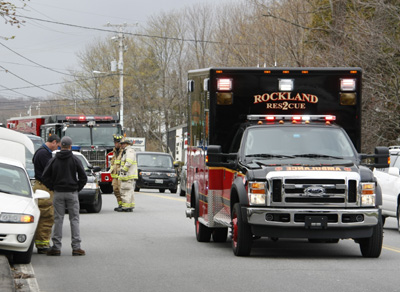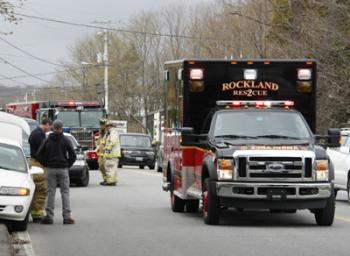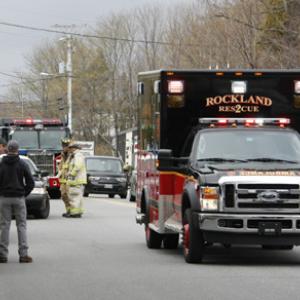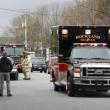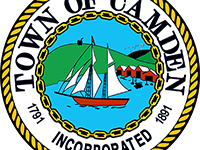Adam Miceli: Now's the time for a heart attack?
Most residents of Knox County will luckily never see the changes happening in the emergency medical field. But, you should know that the local system is taking a significant step forward in ensuring injured or ill persons receive the most appropriate level of care in the most efficient and rapid manner. The Knox County Regional Communications Center is raising its call-taking and dispatching service to a new level.
The Regional Communications Center is the first step in answering any emergency. All 911 calls are routed through the KRCC on Park Street in Rockland and from there the appropriate towns’ resources are dispatched to take care of the emergency, be it a fire, law enforcement issue or a medical emergency. These personnel are the first ones a caller speaks to when they call 911 and must they ascertain the location and nature of the call and dispatch the appropriate resources. On the medical side of things, the use of the Priority Medical Dispatching Protocols is helping local responders determine which resources are needed and how quickly they must travel to get to the scene to make a difference.
Why is this newsworthy? Well there are a few reasons: first and foremost we all are better when those who access it, understand the system. Dispatchers frequently suffer verbal abuse from frustrated callers who wish only to say their address and, “send an ambulance.” They’re clearly dealing with what they deem is an intense medical situation on their end, and the number of questions can seem unending and serve to the response. This would be an incorrect assumption and an example of where we have not done enough to help educate the public to the in’s and out’s of the emergency medical system.
While we could “just send an ambulance,” today ambulances are far more that just taxis with room to lie down. The personnel who arrive can range in capability from those who treat minor injuries to paramedics who can perform some emergency surgical procedures, and give drugs that have an immediate positive effect. Believe it or not, these things do save lives even when you live close to the hospital. In many cases a heart attack’s damage can be stopped, as can that of a stroke. Persons who are barely breathing due to drug overdoes can be brought around to a safe status to ensure physical and mental damage is minimized or eliminated. These thing all can happen when the KRCC staff have good information from the caller and the correct resources are sent to the scene immediately. Anything less is below the standard of care we enjoy in 2013.
While the Medical Priority Dispatch System has been in use by the KRCC staff for years, it is just now that the State EMS board that oversees its implementation is requiring all 911 centers in Maine use it. As we in the EMS field start to hear and utilize some more of the MPDS features, it reveals how far the field of emergency telecommunications (dispatching) has come. No longer does the dispatcher ask “what’s wrong” and then try and describe what the caller said over the radio to local responders. Today, using the MPDS, structured questions are asked, each building from the last and leading to a sound determination of which level of resource needs to be sent to best address this emergency and whether or not they should “race” there using lights and sirens.
Often times, while the people involved in a medical emergency feel that it is a true emergency, medical professionals as well as the statistical data, show that some are in fact not going to suffer from any further consequence if the ambulance doesn’t use its lights and sirens to get there. Why would that make a difference? Simply put, emergency responses using lights and sirens (Code 3) increase the danger of traffic accidents.
These responses place the public at greater risk and represent one of the most dangerous parts of EMS work. People do funny, well, maybe not funny, but unexpected things, when they are approached by an emergency vehicle traveling “Code 3.” Some speed up, some stop dead in their tracks, some follow the law and pull to the right as far as practical and stop, while others pull as far to the right but continue on the shoulder at 55 miles per hour!
A “Code 3” response means the emergency vehicle may have to pass through an intersection against a red light, which can be a very dangerous maneuver; of course stopping behind a line of traffic generally causes erratic behavior and thus also can cause significant negative issues. The point here is that if emergency vehicles does not have to respond “Code 3” and can travel with the flow of traffic without the victim suffering further injury or illness, then this is the best case for all involved. Of course there are those emergencies that a rapid response can make a life or limb difference and they need to be answered in a manner that is as quick as safety allows. This brings us back to the call-taker/dispatcher who is assessing the patient from the time they receive the call.
The call-taker/dispatcher has the “questioning tool” in front of them at their work station and upon taking a 911 call, which first starts with “What is the address of your emergency”, so no matter what happens they’ll be able to send someone to check it out if the line goes dead. Once they’ve established where the incident is, they will ask the nature of the emergency and for medical emergencies they can begin the MPDS questions and dispatch determination.
The MPDS questions and system overall has been around since 1977 and has undergone numerous revisions to ensure that it is on the forefront of delivering quality emergency medical care. The system is overseen by doctors and other medical professionals from all over the world, who constantly evaluate and refine the system to best serve those people requesting emergency care via 911.
Again, this brings us back to the delivery of high quality EMS care in Knox County, by assisting our call-taker/dispatchers with a medically vetted logical question algorithm that allows the responding ambulance crews to properly match their resources (personnel) and response (lights and sirens or not) to the patients emergency. Now, more than ever our citizens and responders can truly see the value of these first line emergency personnel.
The Knox County Regional Communications Center director, supervisors and staff should be commended for their effort to enhance the response capability of all the local EMS responders by helping them make better informed decisions based on this new call taking/dispatching program. It is these types of programs that will allow us to see greater efficiencies in our system hopefully increase our level of care, while reducing unnecessary “hot” response and costs associated with sending a maximal response to calls that may not warrant the numbers of levels of care when those resources are scarce to begin with.
And while this letter seeks to showcase this enhancement of the EMS system, please don’t have a heart attack just to test it. Trust that they’re ready, and be well.
Adam Miceli is Assitant Fire Chief at Rockland Fire and EMS.
Event Date
Address
United States

